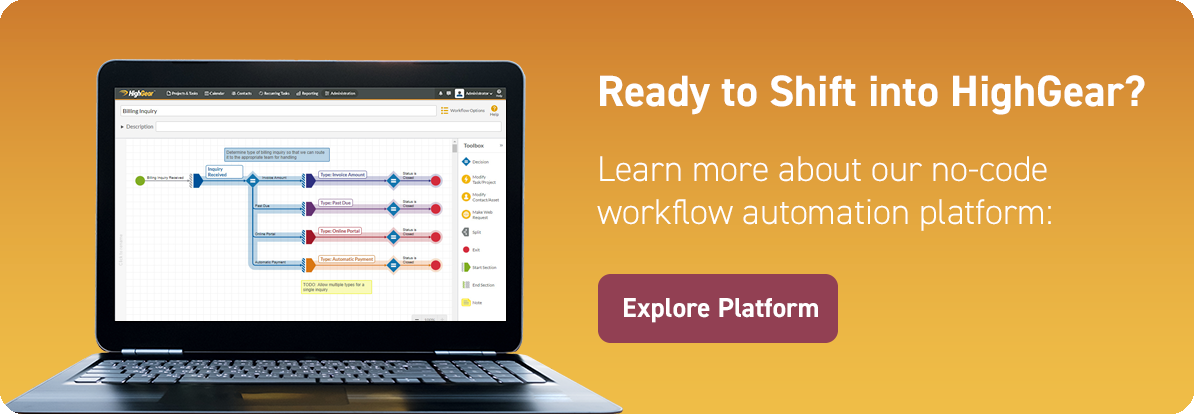
Workflow Automation enables the replacement of paper-based and manual process using digital tools, typically using a single work platform which integrates with existing business systems and controls. The tactical aim is to ensure that the right workers are working on the right tasks at the right time and have everything they need to complete work tasks available to them when they need it. Workflow automation means businesses may standardize work, ensuring preset business rules and compliance policies are met, reduce or eliminate human error and deviation, and providing visibility and accountability at every stage of the automated process.
A more succinct definition of workflow automation would be:
“Workflow Automation is defined as the design, creation, deployment and automation of business processes based upon preset rules where work tasks are automatically triggered and routed between people, technology and data.”
The Primary Benefits of Workflow Automation
Automating manual workflows and processes delivers the following key benefits:
- Improved efficiency
- Increased productivity
- Increased accuracy and reduction in deviations
- Increased visibility into work in almost real-time
- Granular accountability down to the individual level
- Reduction in use of assumptions/feelings and increased use of facts in decision making
- The ability to impose meaningful KPIs and generate real-world data for use in process improvement
- Increased data security
These are not the only benefits from deploying a workflow automation platform, there are other ‘softer’ benefits such as improved customer satisfaction (reduction in wait times, reduction in errors), improved job satisfaction (employees can demonstrate their productivity with facts too), improved vendor relations (improved communications and visibility into work outside the organization).
Why You Need Workflow Automation?
Modern organizations are struggling with the digital transformation challenge: how to unify internal and external business communications where email, telephone, spreadsheets, whiteboards and Post-It notes dominate task and work management. All of these task management tools rely largely upon human memory and are poor tools for collaboration and generating visibility when a worker or decision-maker needs it.
A workflow automation platform allows organizations to drastically reduce reliance upon these communications and tracking tools, instead ensuring that all work task information and communications are either conducted within the platform or maintain a record of communications within the relevant work tasks.
Far less reliance is placed upon fallible human memory or task tracking spreadsheets which may not have been shared after being updated by a worker somewhere else in the company. Instead, the workflow platform maintains this information in a central repository which can be distributed or accessed by anyone with the authority to do so (usually using Role-based Permissions).
The Value of Workflow Automation
In essence, you need a workflow automation system because it delivers a far more consistently positive experience for your customers, both external and internal, when it comes to finished work product.
Work is turned around faster, while people can do more with the resources they have, but also your team and department heads will be able to justify budget allocations and performance based upon facts not feelings. “I feel we are busy,” can be replaced with, “We increased production output byx% without an increase in headcount.”
Ultimately, you need workflow automation because it allows you to create a competitive advantage over manually-driven competitors, as you achieve the ROI of workflow automation by delivering better quality work and services at a lower price point while enjoying faster and better decision making.
